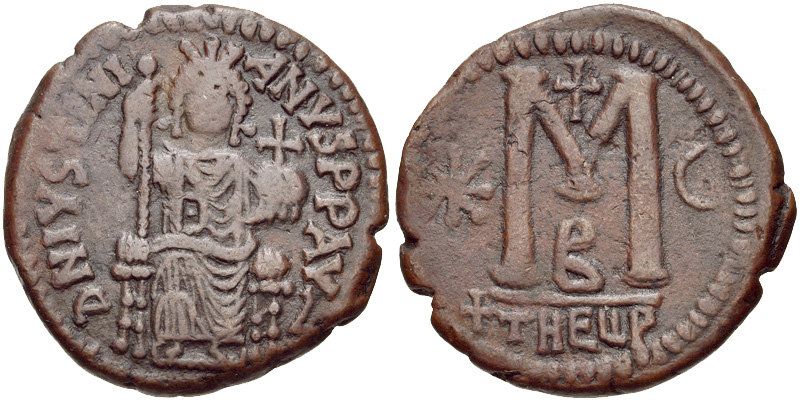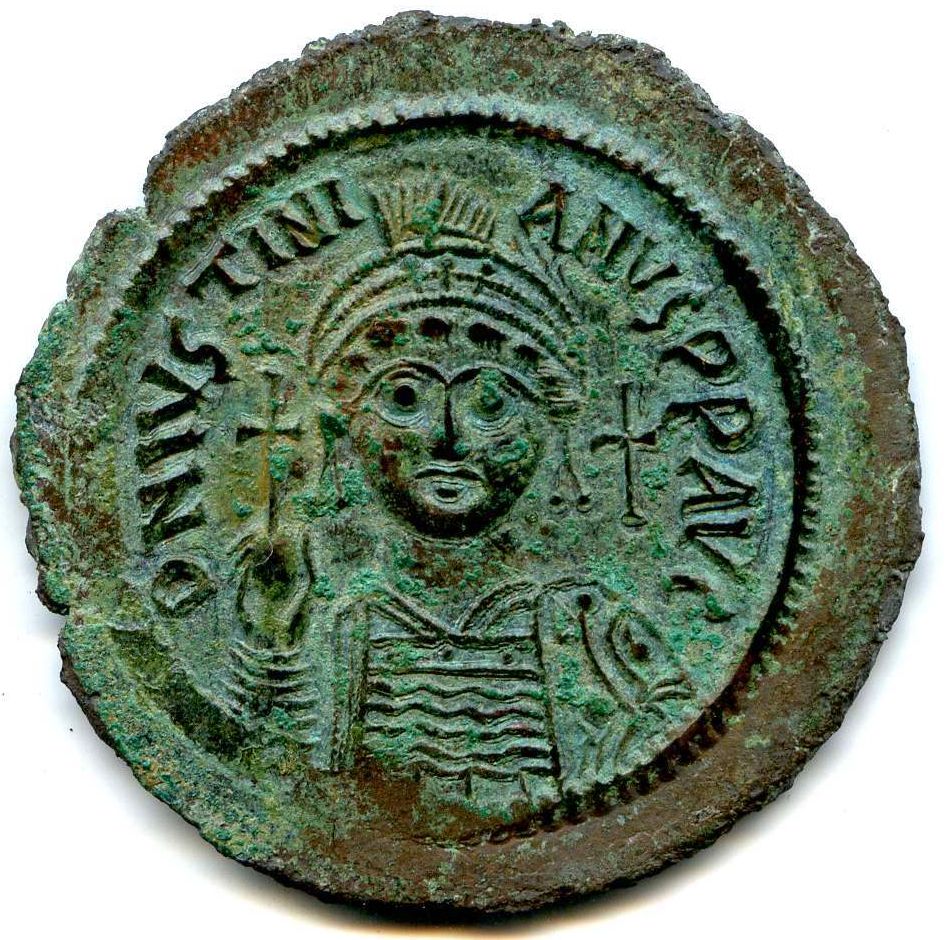Justinian the Great (Justinian I)
Born c. 482 A.D., Byzantine Emperor 527-565 A.D.

Copper Follis of 40 Nummia, 30 mm, Antioch mint, c. 529-533 AD
O: Justinian enthroned.
R: Large "M" (Greek for 40, representing the
denomination). Star to left, cross above, and crescent to right.
Below, +THEUP, representing the mint name.
Antioch was almost destroyed by a great earthquake in November 528 AD, after
which it was renamed Theopolis, or "City of God."

Copper Follis of 40 Nummia, 42 mm., Nicomedia mint, 541-2 AD.
In 538 AD, Justinian undertook an extensive reform of the coinage.
Justinian I, or Justinian the Great, was perhaps the greatest Byzantine
emperor. Educated in Constantinople by his uncle Justin, an army officer,
he became a power behind the throne when his uncle became emperor in 518.
In 527 he succeeded Justin to the throne.
Justinian's aim was the restoration of the earlier Roman Empire by reconquest of areas lost to the Germanic tribes. With the help of his general Belisarius, he regained North Africa from the Vandals and Italy from the Ostrogoths. Justinian also acquired southeastern Spain. Repeated wars with the Sassanian Persians, however, usually ended with the Byzantines buying peace; and the Slavs occupied much of the Balkan Peninsula.
Justinian also improved the system of justice by the codification of Roman law in the celebrated Justinian Code. After the great Nika riot and fire in Constantinople (532), he rebuilt Hagia Sophia with extraordinary magnificence.